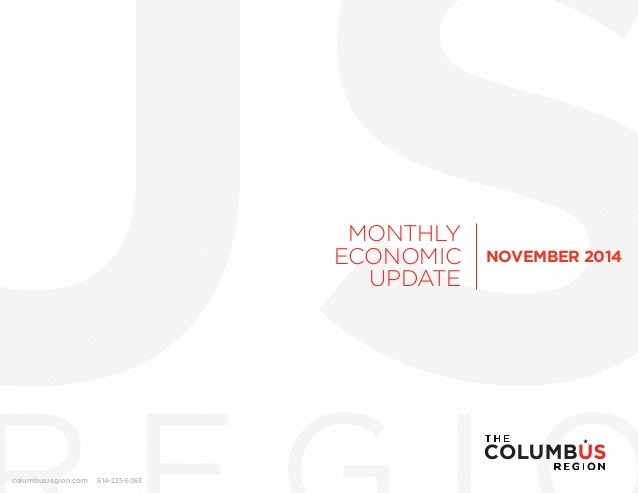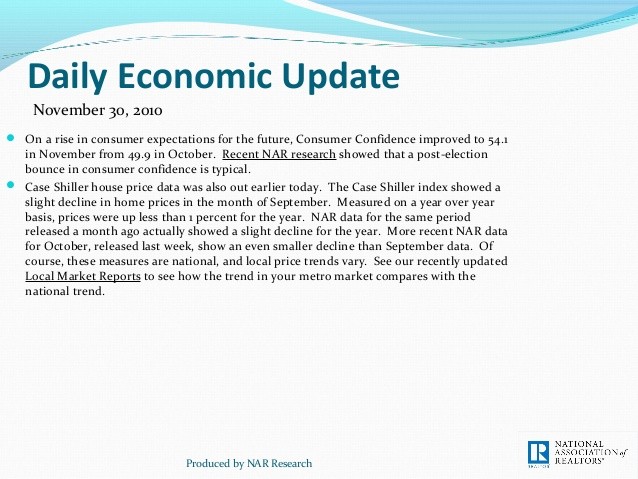November Economic Update
Post on: 1 Апрель, 2015 No Comment

Submitted by Steward Advisors on November 5th, 2014
THE MONTH IN BRIEF
Wall Street had a dramatic October, as investors grew anxious about the big Es: Ebola, Europe and easing (specifically, the end of QE3). Ultimately, stocks climbed higher with help from another big E: earnings. The S&P 500 advanced 2.32% for the month, pushing into record territory again. Many Asia Pacific stock indices posted solid gains; many European indices racked up October losses. It was a rough month for gold, silver, oil and many crop futures. Domestic indicators were mostly positive and made the U.S. look like a bright spot in the global economy. Sales picked up slightly in the housing market, and the stock market seemed to take the wrap-up of the Federal Reserves historic stimulus program in stride. 1
DOMESTIC ECONOMIC HEALTH
The initial Q3 GDP reading suggested that the economy was now on solid footing. The Bureau of Economic Analysis reported 3.5% expansion in Q3; that and the 4.6% growth of Q2 represented the best six months for the economy in more than a decade. Consumer spending was the question mark: it grew just 1.8% in Q3, and it actually retreated 0.2% in September, a month which also brought a 0.3% decline in retail sales. Some of the Q3 personal spending slowdown could be attributed to limited wage growth; personal incomes had grown by an unspectacular 2.0% in 12 months. 2,3
Consumer confidence, on the other hand, kept improving. The Conference Boards October index hit 94.5, and the University of Michigans consumer sentiment gauge had a final October reading of 86.9. 2,3
Thanks to 248,000 new hires, the U.S. jobless rate fell to 5.9% in September. America hadnt seen such low unemployment since July 2008. The U-6 rate (unemployed + underemployed) dipped to a 71-month low of 11.8%. 4
September saw no real pickup in consumer prices just another 0.1% gain in both the headline and core Consumer Price Index. The annualized advance for both was just 1.7%. (Food prices, however, had risen 3.0% in 12 months.) Producer prices dipped 0.1% in September after being unchanged for August. 2,5
Speaking of production, September brought a 1.0% gain in factory output, although hard goods orders tailed off 1.3%. The 59.0 reading on the Institute for Supply Managements October manufacturing PMI defied the forecast of analysts polled by MarketWatch, who had predicted a 0.1% decline from September to a mark of 56.5. (ISMs non-manufacturing PMI fell a whole percentage point in September to 58.6.) 2,6
Lastly, the month ended with the American Automobile Association forecasting the average U.S. gas price to dip under $3 a gallon in early November, a prediction that came true. On November 3, AAA had a mean nationwide price of $2.98 for regular unleaded, which had become 36 cheaper over a year. 7,8
GLOBAL ECONOMIC HEALTH
Just as the Fed halted its monetary stimulus, the Bank of Japan increased its asset purchase program. On Halloween, the BofJ said that it would boost its quantitative easing to 80 trillion yen a year from the current 50 trillion yen. The announcement gave a boost to global stocks and poised Japans currency for depreciation. 7
Not all the news out of the Asia Pacific region was so encouraging. Chinas economy was coming off its poorest quarter since 2008: its official GDP reading for Q3 was 7.3%, down from 7.5% in Q2 and the poorest measurement taken since Q1 2009. The countrys industrial output rose to 8.0% in September from 6.9% in August, perhaps a sign of a better number for Q4. The Chinese governments manufacturing PMI declined 0.3 points to 50.8 for October, while the HSBC/Markit PMI for the nation came in at a slightly improved 50.4. 9,10
Was a recession imminent for the euro area? At months end, the European Central Bank had refrained from easing, even with the risk of deflation. Germanys manufacturing sector grew slightly in October, but there was contraction in Italy and France and the overall Markit factory PMI for the eurozone was a tepid 50.6. 10
WORLD MARKETS
European stock market investors lacked confidence in October: the month saw the Europe Dow lose 2.98%, the STOXX 600 1.83%, the FTSE MIB 5.30%, the CAC 40 4.15%, the DAX 1.56%, the RTS 2.87% and the FTSE 100 1.15%. 1
In Asia, key indices turned in much better performances. While Koreas KOSPI retreated 2.76%, the Shanghai Composite gained 2.38%, the Nikkei 225 1.49%, the ASX 200 4.42%, and the Asia Dow 1.98%; the Sensex and Hang Seng both advanced 4.64%. In the Americas, the Bovespa gained 0.95%, the IPC All-Share 0.09% and the DJ Americas 1.98%. Up north, the TSX Composite slipped 2.32% for October. 1
Finally, the Global Dow lost 0.26% last month; the MSCI Emerging Markets Index rose 1.07% and the MSCI World Index advanced 0.57%. 1,11

COMMODITIES MARKETS
For the second straight month, big losses characterized this sector (select crops aside). Supply again outweighed demand for NYMEX crude: oil prices dropped 11.63% to $80.54 a barrel by Halloween. Other energy commodities were hit hard, too: heating oil slipped 5.11%, natural gas 6.35% and unleaded gasoline a whopping 16.94%. While copper moved 1.30% north on the month, silver retreated 5.44% and gold fell 2.94%; platinum futures lost 5.38%. Silver ended October at $16.11 an ounce, gold at $1,171.60 an ounce. The U.S. Dollar Index gained a little more in October. On September 30, it had settled at 85.94; on Halloween, it closed at 86.92 to go +1.14% for the month. 12,13
With winter coming to northern climes, certain ag commodities had a great month. Wheat futures rose 10.04%, soybean futures 14.31% and corn futures 16.33%. Sugar advanced 3.36%. The major losses came in warm-weather crops: cocoa fell 11.96%, coffee 3.01%. 12
REAL ESTATE
September saw a minor acceleration in purchases of both new and existing homes: the National Association of Realtors reported resales up 2.4% and the Census Bureau found a 0.2% monthly advance in sales of new residences. Year-over-year, new home sales had improved 17.0%. NARs pending home sale index rose 0.3% for September after falling 1.0% for August. As for home prices, the yearly gain in the S&P/Case-Shiller Home Price Index continued to moderate, lessening 1.1% to 5.6% in the August edition. 2,14
Markedly declining mortgage rates may have promoted an increase in home buying for October. On October 30, Freddie Mac had the average interest rate on a conventional home loan at 3.98%. In Freddies September 25 Primary Mortgage Market Survey, it was up at 4.20%. While the mean rate that Freddie measured for the 1-year ARM was 2.43% in both surveys, the 15-year fixed became cheaper in October with average interest rates falling to 3.13% from 3.36%, and so did 5/1-year ARMs with mean rates falling from 3.08% to 2.94%. 15
As the housing industry said goodbye to another summer, the yearly rate of housing starts topped the 1 million mark again thanks to a 6.3% September rise in groundbreaking. The Census Bureau also noted a 1.5% gain in building permits for that month. 16
LOOKING BACKLOOKING FORWARD
Last month, one of the biggest threats to stocks wasnt an economic development but a disease. The first Ebola cases reported in the U.S. and the fear about the global reach of the virus contributed to the Dows triple-digit plunges as much (or more) than headlines from Europe and China. The fears eventually lessened, the market went back to focusing on fundamentals, and U.S. equities came out ahead. Across October, the DJIA rose 2.04% to 17,390.52, the S&P 500 2.32% to 2,018.05, the Nasdaq 3.06% to 4,630.74 and the Russell 2000 a tremendous 6.52% to 1,173.51, taking its YTD return to +0.85%. The CBOE VIX lost 2.28% in October, descending to 14.03 on Halloween. 1














